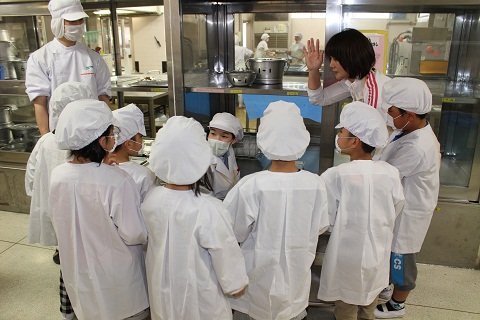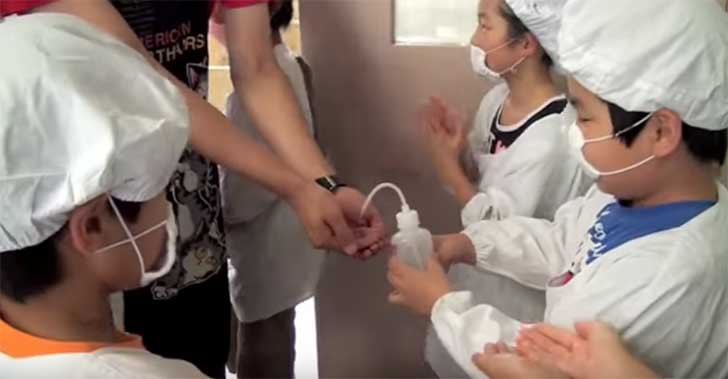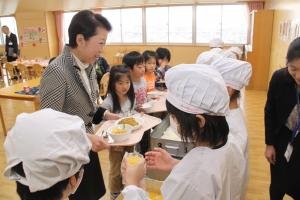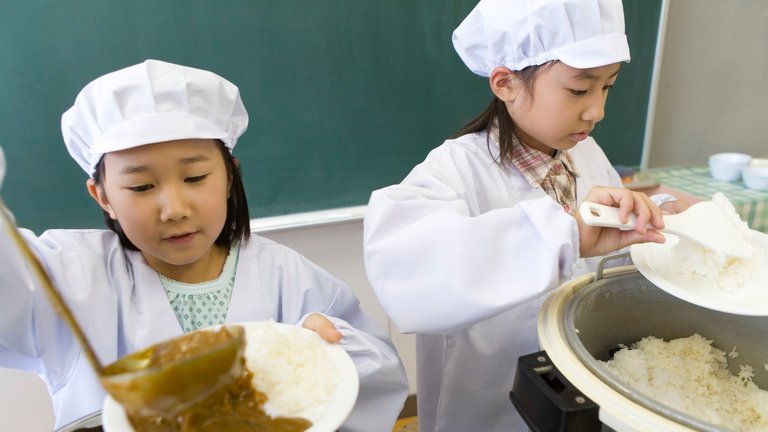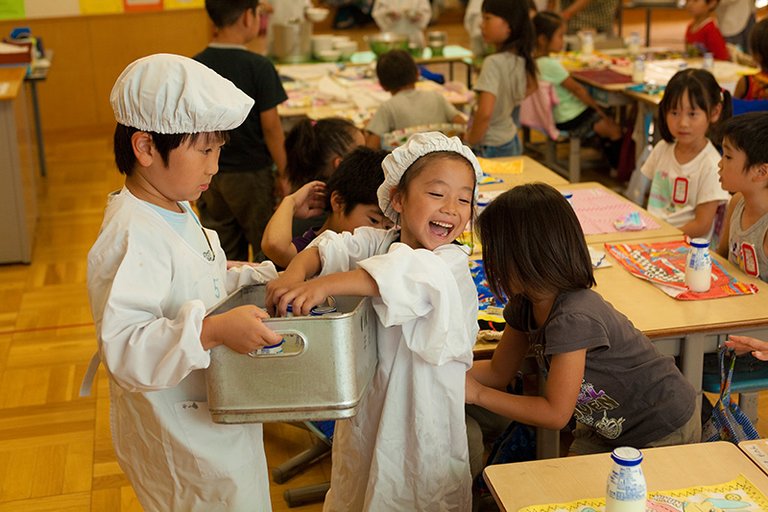
Source
Direct experiences contribute to and influence positive development, providing innumerable knowledge that reinforces the behavior and execution of tasks in an appropriate manner.
Applying the educational technique through direct experience is training the individual to understand and acquire knowledge that is essential for personal and professional training.
When it is allowed to learn beyond theory, a knowledge based on the tangible is being built, which will guarantee success in tomorrow's future in all areas of life.
Direct experience in the school dining room.
Learning can be generated in any influential field of the same, not only in the open air but in spaces created especially for that educational purpose.
The realization of activities helps to understand the values, the human formation, the rectitude, the solidarity and the necessary functions that must be put into practice day by day.
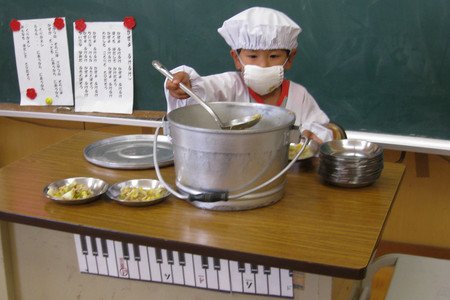
Source
Providing students with meaningful learning located in the dining room will help to understand the importance of the foods to be eaten and the differences between junk food and the foods necessary for healthy growth.
In addition, this educational and instructive practice will complement the team work, the treatment with respect for others, the socialization, improve the expression and the way in which people see themselves, being a stimulant in personal training.
Objectives of the direct experience in the school canteen.
- Achieve teamwork.
- Understand the importance of food.
- Recognize when foods are in good composition or decomposition.
- The application of hygiene standards.
- Learn to eat balanced with proteins and carbohydrates.
- The learning of cooperative work.
Function of the educator, so that the experience in the school canteen is carried out successfully.
The educator must explain to the students that a healthy diet leads to a favorable growth.It is necessary to inform the students that the direct experience will come to life in the dining room, corresponding to the learning functions related to:
- Solidarity.
- Learning of the foods that have to be ingested to be able to pay attention in classes, since a satisfied stomach achieves that the mind reacts better.
- The importance of maintaining hygiene both in food and in the human being as such.
- How the distribution of food influences the well-being of the body and the mind.
- Teamwork achieves the objectives, since one hand serves to help the other, that is, mutual cooperation.
The experimentation in the dining room nourishes the knowledge for the wellbeing of the person and is something that the students must understand.
Learning activities in the dining room.
In addition to acquiring knowledge through theory, it is necessary to deepen and immerse students in learning through direct experience, help them to be part of that something to demonstrate that education is important.
Activities:
Explanation of the rules to follow at work, for the preparation and delivery of food in the dining room.
The person in charge of the kitchen will explain to the children that they will carry out simple tasks that are within their reach. They will be kitchen helpers to prepare with love the preparation of the meals that the children should eat at the assigned time in the dining room.
Children will be active participants in the procedures that must be carried out to meet health expectations and the preparation of delicious food dishes.
Students will be explained that it is necessary to be in the kitchen area and in the delivery of food as follows, always with the right clothes:
- Apron.
- Lid of the mouth.
- Hair cap.
It is essential that hygiene be maintained since the food will be handled to be processed into delicious food dishes, including protein and carbohydrates.
Students should understand that before handling items and then deliver them, they should wash their hands, cutlery, among others.
This activity will be a stimulant that will help children in hygiene, both in the chores of the kitchen, as in the home and in any other activity or procedure that requires keeping the body and spaces impeccable.
Location of pots and utensils for food delivery.
Maintaining order and correctly applying the distribution is important to properly coordinate what should be done.
The children, after having been kitchen assistants, must proceed with their delivery, and for this, they must go in order and be aware of what they are going to do.
The cook in charge of the group and the educator should remain close to the children to verify that the procedures are followed.
Explanation to the children of how to make the delivery of the food trays.
The cook should teach the children about the good treatment for others, the distribution of the portions and, to complement the practice, the educator should place the children on a rotating basis in the delivery of fruits, carbohydrates, proteins, delivery of cutlery among others, so that everyone exercises a function that will determine in them, in whom they must become and how healthy will be the learning of a balanced diet.
In this activity, students can socialize with other classmates with whom they had not previously spoken, assimilating what is coexistence and respect.
Students will also select and distribute the food between carbohydrates and porteinas, delivering the trays with a beautiful smile.
Delivery of trays for food placement.
Children will perform functions for adults and will be responsible for their actions, this procedure will verify the way to treat classmates to improve the relationship between them.
The idea is that when the students deliver the trays where the plates and cutlery will be placed, they can offer the correct attention.
Learn to distribute and know the importance of proteins and carbohydrates.
Each child must go through a work area, from the distribution of the trays, the distribution of fruit, the cutlery and the distribution of equal parts of the food.
The dishes between the children will be rotated and with great care, they will learn to have control, to know how to separate and distribute, why healthy foods are essential and the complementation of the fruit.
All the practice is done with a purpose, and this does not escape from emphasizing the balanced diet and in equal parts, to maintain the body with what sustains it for its performance.
Distribution of delicious and nutritious drinks.
Children should have adequate nutrition for their body with drinks that qualify as acceptable within the nutritional balance.
They will be able to distribute juices or milk, which provide proteins to the body. A drink is satisfactory to complement a healthy diet.
Children can put into practice what they have learned at school in their homes, as it is the second home where they learn to develop in several areas.
Education begins from the simplest topics to those that contemplate a greater complexity, and feeding is a matter of importance that requires commitment so that students learn the benefits of a balanced diet.
Activities to be done in the classroom, when the direct experience in the dining room ends.
The educator is obliged to ask the students how this experience made them feel when preparing and distributing meals in the dining room.
Example of questions such as:
Do you like to be useful and contribute to others?
Do you think that a balanced diet contributes to development? Why?
When we eat foods that are not consistent with the diets to follow to maintain nutritional balance, are we affecting the body?
Activities:
The educator gives the children a leaf with a food pyramid, in which the food is out of it, and the students must place according to: carbohydrates, vitamins, minerals, dairy products, proteins, fats and sugars.
Complementing the activity, they explained the reason for their response.

Source
Educating should be fun and making students feel that they can enjoy it makes it even more satisfying.

Greetings educators and motivators of education

@SteemitEducation

@Edu-Venezuela
Posted from my blog with SteemPress : http://cindycam.vornix.blog/2018/09/08/educate-children-through-direct-experiences-part-53/
